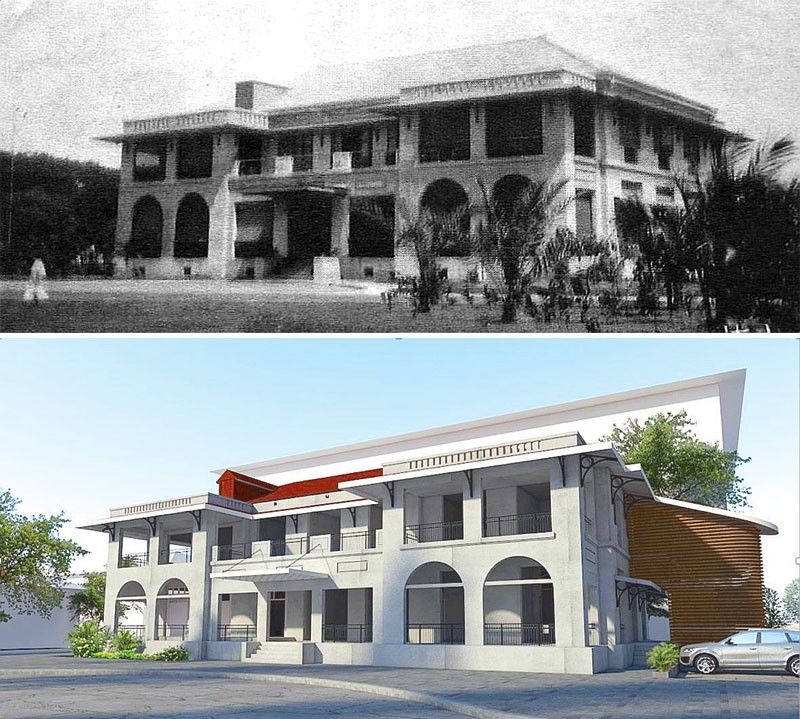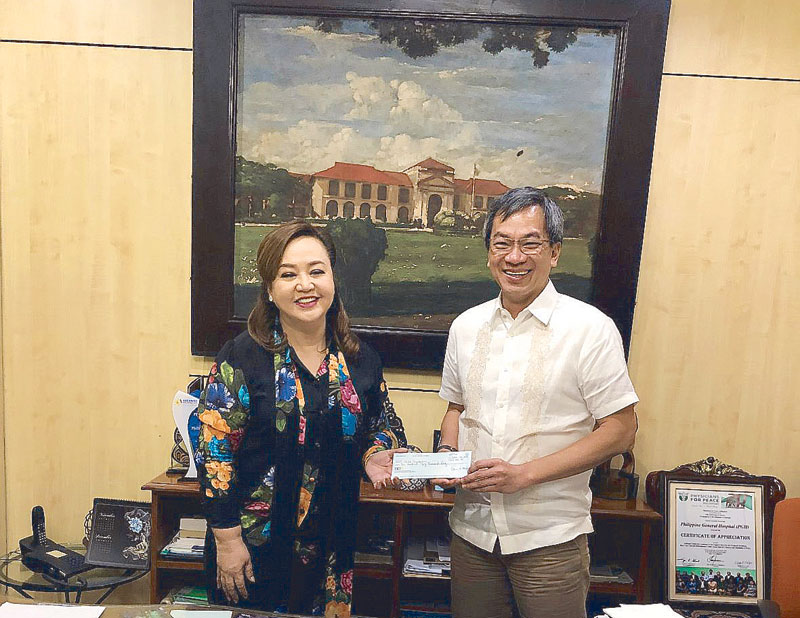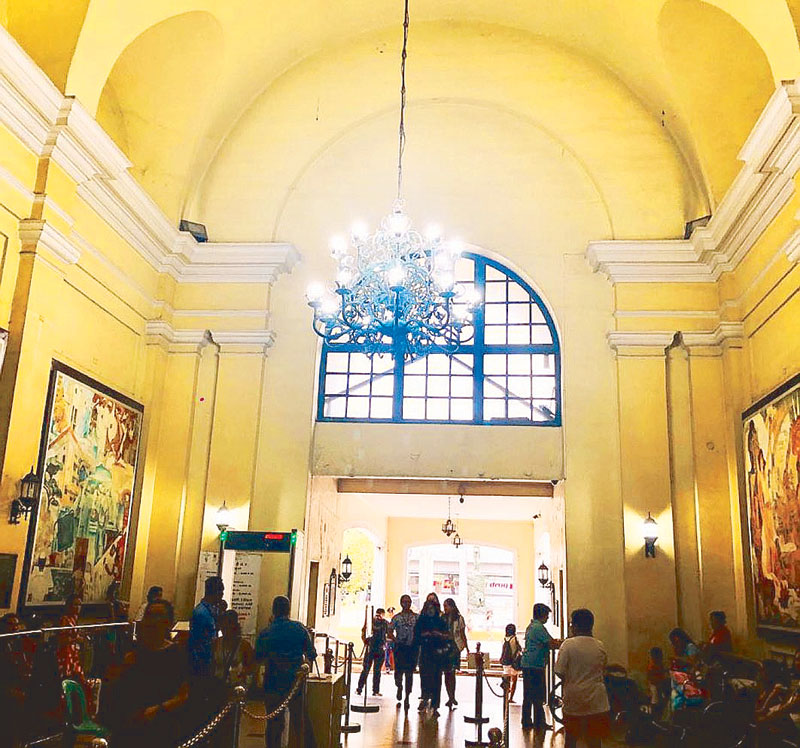Restoring the past, building the future

The year of the Crazy Rich Asians also was the year of the Crazy Generous Asians.
For its 12th annual philanthropy roundup, Forbes Asia proudly presented to the world 40 individuals — three from the Philippines — who the magazine called its “heroes of philanthropy.”
“The goal is to capture individual philanthropists — those making donations with personal funds and not through their businesses (unless they own a substantial stake in the companies, in which case we consider the giving a part of their fortune),” Forbes Asia said.
From the Philippines, in the order they were mentioned, are: Jose Mari “Butch” T. Albert, 68, chairman, Fila Isport Life; the Philippines’ “Woman of Steel” Alice Galang Eduardo, 53, president and CEO, Santa Elena Construction & Development Corp.; and Susana Abad Santos Madrigal, 63, president, Consuelo Chito Madrigal Group of Companies.
* * *
“Nakakapuno ng puso (It fills my heart),” Alice, one of PeopleAsia magazine’s “People of the Year” in 2016, says of the honor bestowed upon her by Forbes Asia. Forbes Asia cited Alice’s personal donation of $277,000 to build a 320-sq.-m. isolation ward at the Philippine General Hospital and an additional $370,000 to build a nearby dormitory to house patients’ families; and $370,000 initial funding for Tuloy Foundation, which cares for and educates abandoned children. She also contributed $185,000 to building 100 homes for typhoon Yolanda victims and provided $184,000 to Habitat for Humanity.
After she received news that she was one of the 40 “heroes of philanthropy,” Alice decided she would celebrate by visiting PGH again. Alice was in PGH in March this year to visit the isolation ward she had donated. During Alice’s previous visit to PGH, she was told by PGH director Dr. Gap Legaspi that it had reduced the mortality rate of cancer-stricken children by 70 percent. During her visit, Alice, a mother of three, noticed that the children’s isolation ward lacked the comforts of an air-conditioning system. Thus, she pledged she would donate it when the building’s electric system was ready.

Alice Eduardo, one of Forbes Asia’s ‘heroes of philanthropy,’ with Philippine General Hospital (PGH) director Dr. Gerardo ‘Gap’ Legaspi.
During her visit last week to PGH, which is dedicated to serving the country’s “poorest of the poor,” Alice personally handed to Legaspi a check for a six-figure amount for the air-conditioning of the isolation ward. As she once said in a local article, “Charity cannot wait.”
“When I give, it comes straight from my heart,” Alice says. “If you give and it is not heartfelt, manghihinayang ka lang (you will feel like it’s a waste).”
Last March, Alice quietly told Legaspi that aside from the additional air-conditioning unit, she wanted to help PGH even more, “no strings attached.” She stressed she did not want building contracts in exchange for her help and told the neurosurgeon it was up to him to channel her donation to the right project. Legaspi told her of PGH’s proposed patients’ relatives dormitory to be called, “Bahay Silungan.” Right then and there, she wrote PGH a check for P10 million.
The patients’ relatives dorm will be housed in the former Nurses’ Home within the PGH compound, which was turned into a female residents’ dorm but was not properly maintained inside and out. The building, almost as old as PGH itself (which was completed in 1910), has become a travesty.
“There is scientific evidence that patients are indeed affected by their surroundings. We should also try to alleviate their feeling of helplessness,” Legaspi said.
Legaspi impressed upon Alice the need for a place for the patients’ relatives to stay because as it is now, they sleep on cardboard mats in the hospital parking lot or on the sidewalk fronting the hospital. They would rather sleep on a carton mat on the street than spend for their fare to the province, only to return the next day to check on their loved ones.

The lobby of PGH’s main pavilion, which, along with the old Nurses’ Home, was completed in 1910.
Alice says PGH is dear to her because her grandmother used to have a restaurant and some businesses near Taft Avenue, and sometimes, she would accompany her lola to PGH “to buy Cortal.” The hospital was part of her neighborhood when she was growing up. When she returned to PGH many years later, Alice was shocked at how the neighborhood and some of the PGH’s facilities had deteriorated over time.
After a photo of Legaspi and Alice poring over the plans for the dorm was published in this paper, another donor called up to donate to the same project. Soon, more donors get in touch with Legaspi to offer their help in upgrading the facilities of the government hospital, which attends to over 600,000 patients yearly.
* * *
In the course of planning the rehabilitation of the dorm, the architects discovered that from a once majestic building, the old Nurses’ Home had regressed to look like a decrepit warehouse, with the archways, the ventanillas and balustrades closed off and the original tiles covered by linoleum!
The first buildings of the PGH were designed by William Parsons, who also designed the Army & Navy Club. He liked deep archways and covered loggias to make the building airy. A photo of the old Nurses’ Home in 1911 was captioned, “one of the most attractive buildings of the entire group…” It was a less ornate version of Malacañang’s Kalayaan Hall. Like Kalayaan Hall, the buildings had capiz windows. Louver swing doors led to the dining room, and hardwood floors dominated the building.
With Architect Manalo’s design, the façade of the building will be restored and its rooms modernized. More toilets will be added, as well as a functioning kitchen that will be run by a church group.

Architect Mico Manalo said he would restore the façade of the Nurses’ Home to how it looked originally. Photo montage above shows the past and present façade of the old Nurses’ Home.
After seeing Legaspi’s vision for the decrepit building as a new, functional patients’ relatives home and the architect’s crusade to restore the building to its past glory, as if encouraging the patients that they, too, can look forward to a change, Alice told the PGH director that she would shoulder the entire cost of the building’s rehabilitation.
“Here, we’re building a brighter future while honoring the past,” she pointed out.
The Woman of Steel likes to build, indeed — hope and havens, with steel and soul.
(You may e-mail me at [email protected]. Follow me on Instagram @joanneraeramirez.)
- Latest




























